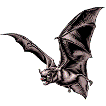Museum, University of Nebraska State

University of Nebraska State Museum: Mammalogy Papers
Document Type
Article
Date of this Version
2007
Citation
Acta Chiroptera (2007) 9(2): 423-435.
Abstract
Mist nets are commonly used to survey bat populations and to estimate bat biodiversity, but several studies have found that mist net capture data and methods are biased due to a number of factors, including size and placement of nets, and the frequency at which investigators check their nets. Despite the wealth of literature and anecdotal reports, few investigators have quantified the interactions of bats with mist nets directly. We employed night vision camcorders to monitor bat behavior when bats encountered a mist net and then utilized these data to reevaluate years of survey data collected on Montserrat, Lesser Antilles. We recorded 2,523 bat passes during 43.3 hours of videotaping in July 2005 and June 2006. Observations conducted on successive nights provide evidence of avoidance-learning behavior in bats. When a mist net was present, 5.4% of bats in the airspace came into contact with the net giving an overall capture rate of 3.2% (range 0–10.3%). Mist nets are not accurately sampling bats that utilize flyways on Montserrat and such fieldwork thereby generates potentially misleading data. Biodiversity assessments and conservation guidelines based on short-term mist net surveys alone are not sufficient or reliable in regards to bats. A pragmatic solution to reduce mist net bias is to repeatedly sample a target region, utilize a variety of netting sites, use variable net sets, and carefully analyze species accumulation curves.


Comments
Copyright 2007, Polish Academy of Sciences. Used by permission.